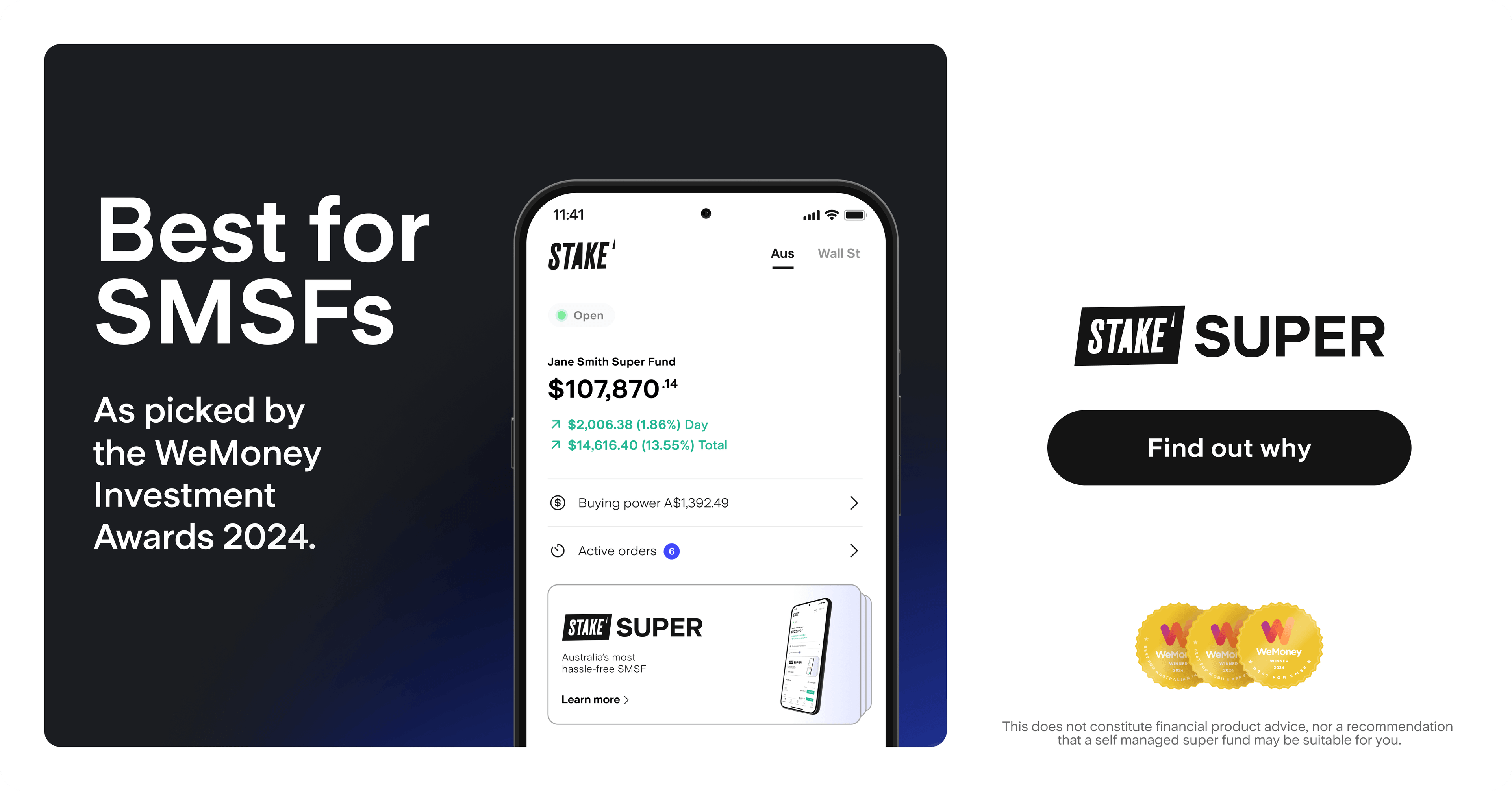.jpg&w=3840&q=100)
Understand SMSF Tax: Everything you need to know in 2025
Self-managed superannuation funds (SMSFs) offer several potential tax benefits for its members, particularly in terms of contributing to and managing their retirement savings.
Setting up your own self-managed super fund (SMSF) means taking the reins of your retirement savings. While it comes with added responsibility, it also offers a degree of flexibility that may allow you to reap benefits that are not otherwise offered outside of superannuation funds.
This article aims to serve as a guide for the different types of tax benefits that an SMSF may offer you; however, it's important to note that these benefits can vary based on individual circumstances and changes in tax laws.
Understand these 5 tax-related SMSF benefits
- Concessional tax rate of 15%
- Tax exemptions in the SMSF pension phase
- Expenses can be paid by the SMSF
- Franking credits to reduce tax liability
- Greater control of tax management
1. Concessional tax rate of 15%
Self-managed super funds generally enjoy concessional tax treatment on various aspects during the accumulation phase (i.e. the phase where you are still accumulating funds into your super), as long as the SMSF is a 'complying fund' that follows the laws and rules of SMSFs and the individual's combined income & concessional contributions do not fall under Division 293 tax rules.
Contributions
Concessional (or ‘pre-tax’) contributions made by SMSF members are generally taxed at a concessional rate of 15%, up to certain contribution caps. As of writing, the yearly concessional contribution cap per member is set at $30,000. For individuals whose marginal income tax rates are over 15%, this concessional tax rate can be favourable.
Assessable contributions may come from employer contributions (including those under a salary sacrifice arrangement) or personal concessional contributions to be claimed as a tax deduction in the relevant financial year.
Investment earnings
Income generated from the super fund's investments and/or assets, such as dividends, interest, rental income and capital gains, less any allowable tax deductions, is also taxed at a flat rate of 15%.
2. Tax exemptions in the SMSF pension phase
An individual can transition from the accumulation phase to the pension phase of a self-managed superannuation fund. The most common reasons to do so are when they either:
- Turn 65 (even when the individual hasn't retired yet); or
- Reach preservation age (age 60) and either retire or start a transition to retirement income stream while continuing to work;
Once officially in the pension phase, all of the member's income from assets supporting the pension income stream become tax-exempt, provided that there is no non-arm's length income included. For members generating income such as dividends, rental income or interest from their SMSF investments, this tax exemption may provide substantial benefit.
This tax concession only applies to retirement phase pensions, it does not apply to members between the age of 60-60 who are still employed and receiving a transition to a retirement income stream. Transition to retirement member balances are taxed the same way as accumulation balances.
One important point to note is that there is a cap (‘transfer balance cap’ - currently $1.9M) in the amount of superannuation that can be transferred into the pension phase. Any members in the pension phase that have a super balance exceeding the transfer balance cap will have the additional amount remain in the accumulation phase and be taxed accordingly.
Pension phase tax exemption for an SMSF with multiple members
For an SMSF with multiple members, the applicable tax rules will depend on whether all members move into the pension phase at the same time or if others will continue to be in the accumulation phase.
If all SMSF members move to the pension phase at once, all income derived from the fund's assets from the pension phase commencement date will be exempt from tax.
However, if some SMSF members remain in the accumulation phase, the SMSF will need to claim an annual tax exemption to exempt current pension income.
Exempt Current Pension Income or ECPI
Exempt current pension income (ECPI) is defined as the amount of income within the financial year that an SMSF makes that is attributable to the member(s) in the pension phase. Income that falls into ECPI will be exempt from tax.
An SMSF with fund members in both the accumulation and pension stages requires an actuarial certificate to be able to claim ECPI in the fund's annual return. Actuarial certificates come from qualified actuaries who calculate the exempt proportion of income for that year.
3. Expenses can be paid by the SMSF
Similar to how individual income tax returns have allowable tax deductions that may lower your tax liability, superannuation and tax laws also allow for certain expenses to be deductible from the fund's income. Doing so may further lower the tax liability of the fund, which is already taxed at the concessional rate of 15%.
Here is a list of some expenses that may be paid (and are generally deductible) by the SMSF:
- Government fees
- Accounting and auditor fees
- Supervisory Levy
- Subscriptions and/or newsletters
- Seminars
- Insurance cover/s (i.e. life insurance, total & permanent disability insurance, income protection insurance, insurance for SMSF's assets)
- Storage fees for SMSF's assets
- Investment property expenses
- Investment portfolio fees
- Other ongoing costs accrued to sustain the SMSF's operations
N.B. This list is not exhaustive nor guaranteed – expenses that can be claimed by the SMSF are subject to the conditions set by the Australian Taxation Office (ATO), and it may be best to seek professional advice.
Expenses can only be paid by the SMSF if they relate to running the SMSF. Receipts must be kept as evidence of these expenses and must be in the name of the SMSF.
Additionally, unlike in the case of individual tax returns, where expenses may be pro-rated according to their percentage of use towards generating income, expenses to be claimed as a deductible under the SMSF must have been for the sole use of the SMSF (without a personal use component).
4. Franking credits to reduce tax liability
If your fund's investments include dividend-paying Australian securities, you may be able to benefit from franking credits.
Franking credits refer to the amount of tax a company has already paid on the profits it distributes as dividends to its shareholders. Dividends received from investments are included as part of assessable income in an SMSF's annual return – this means that dividends paid out after a company already pays corporate tax on it, including in your return, would lead to double taxation.
Fortunately, the existence of franking credits means this issue is mitigated as the tax paid pre-dividend by the distributing company offsets the tax payable by the SMSF.
This can be particularly powerful for a fund member who has entered the pension phase and thus has a tax rate of 0%. In this instance (provided the SMSF has no other taxable income), the value of the franking credit is returned to the SMSF as a tax credit. For example, if an SMSF in the pension phase earned $1,000 in dividends that were fully franked from a distributing company that paid 30% corporation tax, a $300 tax credit would be refundable to the SMSF.
5. Greater control of tax management
SMSFs provide its fund members with a valuable tool to manage their taxes.
Aside from the points outlined in previous sections, another one of their key benefits is the flexibility it offers in setting up your own SMSF investment strategy.
SMSF members can tailor their portfolios to be tax-efficient by strategically selecting assets like shares, investment properties, and fixed-income investments. Additionally, SMSF members can make tax-deductible contributions, allowing them to reduce their taxable income.
Timing of contributions and withdrawals is another area where control can be exercised, enabling individuals to optimise their tax position, such as making contributions if they have higher marginal tax rates and withdrawing funds in retirement when in lower tax brackets. Managing Capital Gains Tax (CGT) is also within the purview of SMSF trustees, who can strategically choose when to sell assets and take advantage of the CGT discount or offset capital losses against gains.
In the pension phase, SMSFs may enjoy tax exemptions on investment income and capital gains, offering further opportunities for enhancing the super fund's tax strategies. Furthermore, franking credits attached to dividend income can be leveraged, and effective estate planning within SMSFs can minimise tax consequences for beneficiaries.
Various tax planning strategies, consolidation of multiple accounts for simplified management, and access to tax experts round out how SMSFs empower individuals to navigate their tax management efficiently.
It's essential, however, that each SMSF trustee is well-informed about tax laws, investment strategies, and compliance obligations, or seek professional advice to ensure they make informed decisions regarding their self-managed super funds investment options and decisions.
Speak to a specialist
Want to know more about Stake Super or have questions? Speak to one of our SMSF professionals.
FAQs about SMSF tax
Is there a tax-free threshold for SMSF?
While SMSFs may enjoy certain tax concessions, there isn't a specific tax-free threshold that works in the same way that the tax-free threshold for individual income does. The closest element to tax-free that SMSFs have is the tax-free income that SMSF members may earn from their superannuation assets once they enter the pension phase.
What expenses are tax-deductible for an SMSF?
Similar to how individual income taxes work, SMSF tax rules allow SMSFs to claim certain expenses from the fund's income to lower the amount of tax payable to the ATO. Expenses are only deductible if they solely relate to running the SMSF.
A few examples of deductible expenses are government fees, accounting & audit fees and insurance covers. Deductions are subject to the conditions set by the ATO, and SMSF members may find it beneficial to seek assistance from a professional.
How much discount do SMSFs get on capital gains tax?
SMSFs in the accumulation phase are also subject to capital gains tax (CGT) when applicable. However, a discount on the CGT tax rate may apply if certain conditions are met.
Generally, investments held for more than 12 months may benefit from a one-third reduction in the realised capital gain before the 15% super fund tax is imposed. This means that an SMSF's net capital gains can effectively be taxed at 10%.

This is not financial product advice, nor a recommendation that a self-managed super fund (‘SMSF’) may be suitable for you. Your personal circumstances have not been taken into account. SMSFs have different risks and features compared to traditional superannuation funds regulated by the Australian Prudential Regulation Authority (‘APRA’). Stake SMSF Pty Ltd, trading as Stake Super, is not licensed to provide financial product advice under the Corporations Act. This specifically applies to any financial products which are established if you instruct Stake Super to set up an SMSF. When you sign up to Stake Super, you are contracting with Stake SMSF Pty Ltd who will assist in the establishment and administration of an SMSF under a ‘no advice model’. You will also be referred to Stakeshop Pty Ltd to enable your trading account and bank account to be set up in order to use the Stake Website and/or App. For more information about SMSFs, see our SMSF Risks page.

Ciara is a Commercial Manager at Stake Super, with over 10 years of experience in the SMSF industry and an MA in Accountancy and Finance from Heriot-Watt University in Edinburgh, United Kingdom. Having previously worked at a chartered accounting firm and one of the largest SMSF administrators in Australia, Ciara has extensive knowledge of SMSF compliance. She is also a current member of the SMSF Association.

.jpg&w=3840&q=100)
